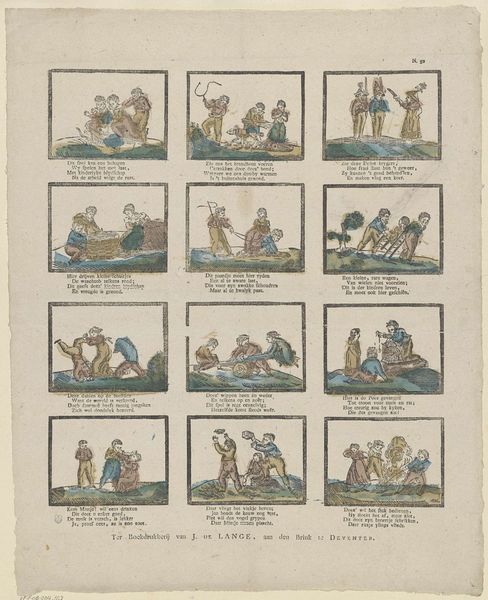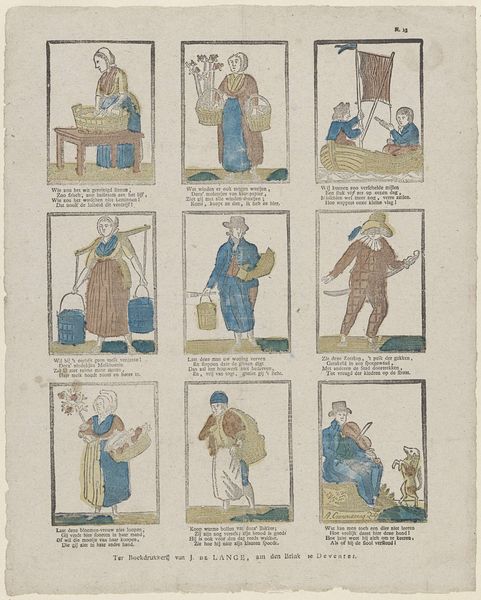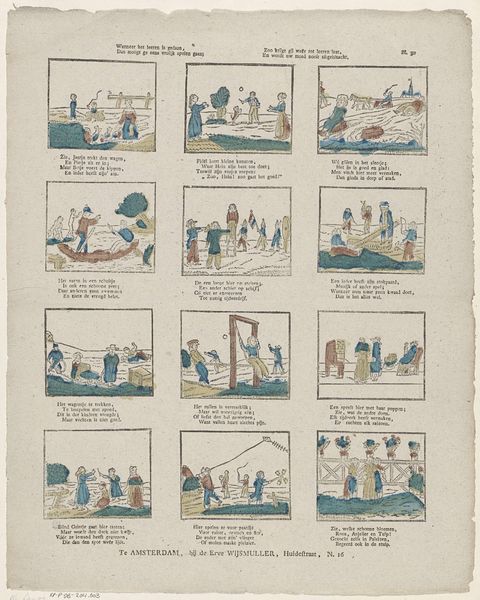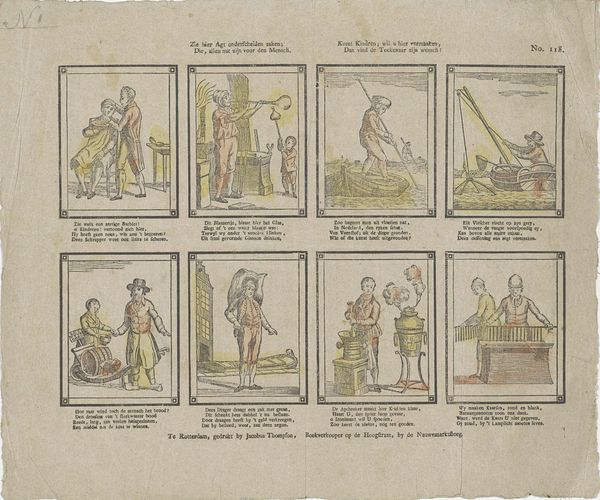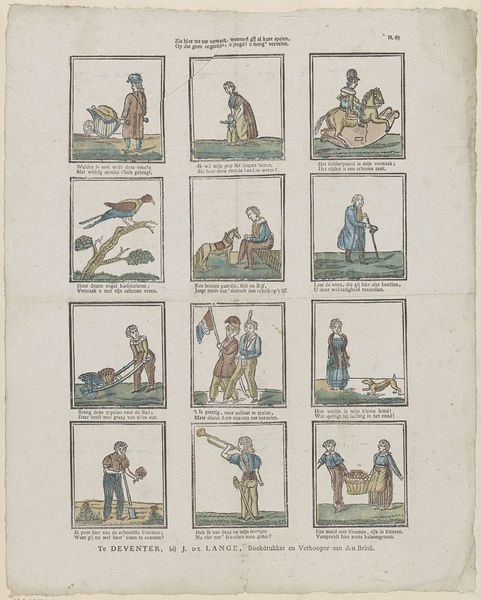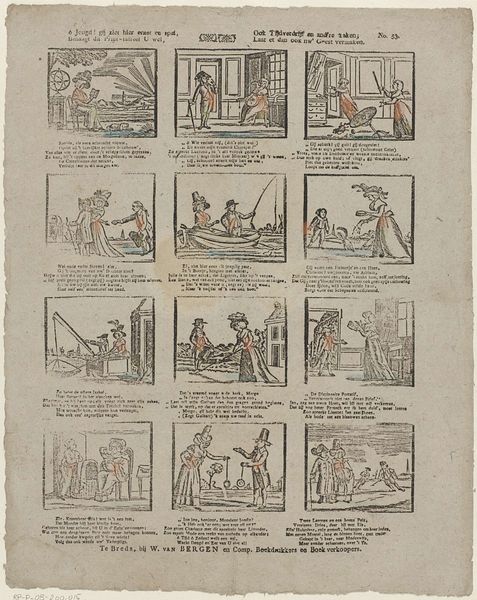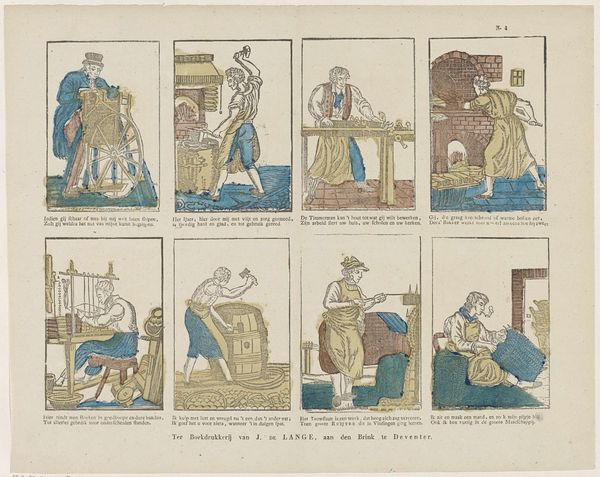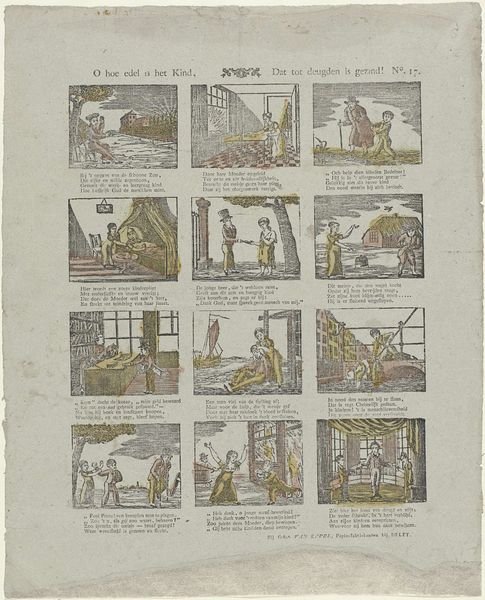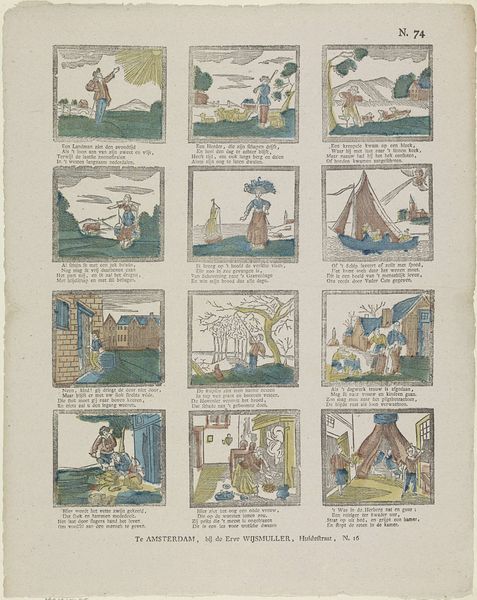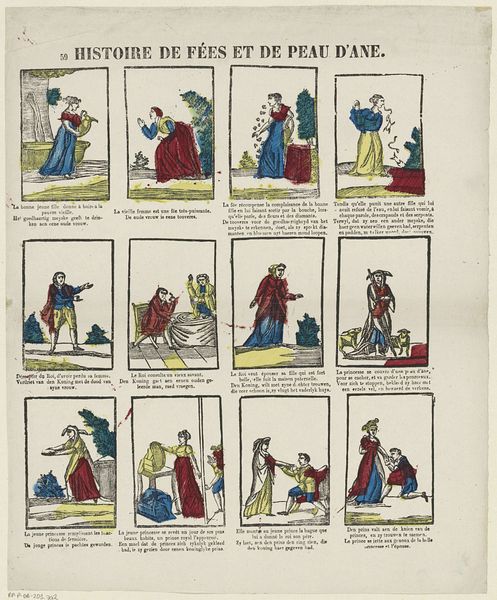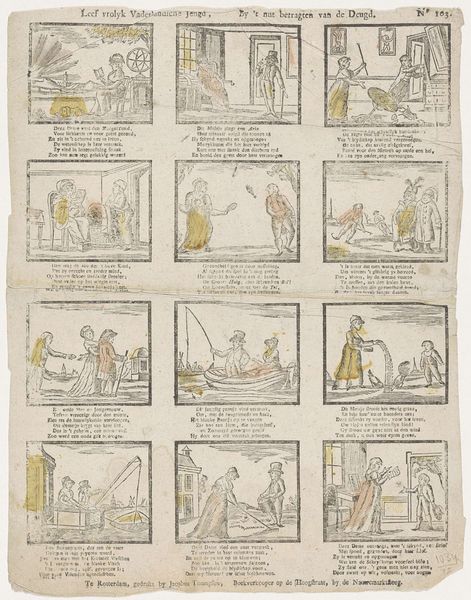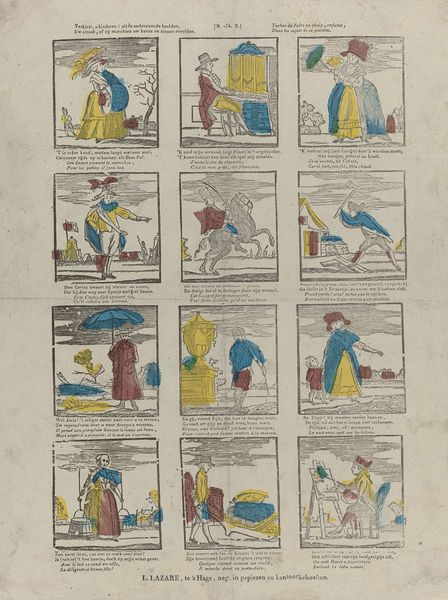
lithograph, print
#
narrative-art
#
dutch-golden-age
#
lithograph
# print
#
figuration
#
folk-art
#
line
#
genre-painting
#
realism
Dimensions: height 325 mm, width 417 mm
Copyright: Rijks Museum: Open Domain
Curator: This lithograph, dating from between 1822 and 1849, is titled "Beroepen" or "Occupations," currently held in the Rijksmuseum. It's attributed to I.I. de Lanier. What's your initial response? Editor: My immediate reaction is to the grid structure. It's a fascinating array of different professions depicted through a sequence of framed vignettes, reminiscent of a storyboard. There is a delightful quaintness to its composition. Curator: Indeed. The division into separate scenes is quite deliberate, aligning with the contemporary cultural emphasis on categorizing and understanding social roles during the rise of industrialization. Each miniature scene encapsulates a particular job, emphasizing its importance in the broader societal context. Editor: The use of line is fascinating here, wouldn't you say? Each figure is delineated with a precise yet almost playful quality. The lithographic print captures this linearity quite expertly, emphasizing contours and creating distinct boundaries within each frame. The rudimentary coloring amplifies the linear aesthetic, suggesting both definition and detachment. Curator: Precisely! This focus on discrete labor categories also speaks to the politics of imagery at the time. By visually isolating each profession, it highlights individual contributions within a rapidly changing economy, yet it also could reinforce class structures. These vignettes arguably served as both a celebration of work and a tool for social categorization, reflecting the values and norms prevalent at the time. Editor: Looking at the composition more broadly, it reminds me a bit of folk art due to the simplification of form and the charming visual style. There is an appealing authenticity about this snapshot of Dutch labor that speaks across time. Curator: Ultimately, de Lanier presents an organized system of occupations, reinforcing our sense of collective history, the organization of the socio-economic strata, and production value during this pivotal moment. Editor: Yes, reflecting upon these segmented laborers certainly stimulates discourse on historical visual categorization and occupational codification. It offers more insight with each contemplative pause.
Comments
No comments
Be the first to comment and join the conversation on the ultimate creative platform.
